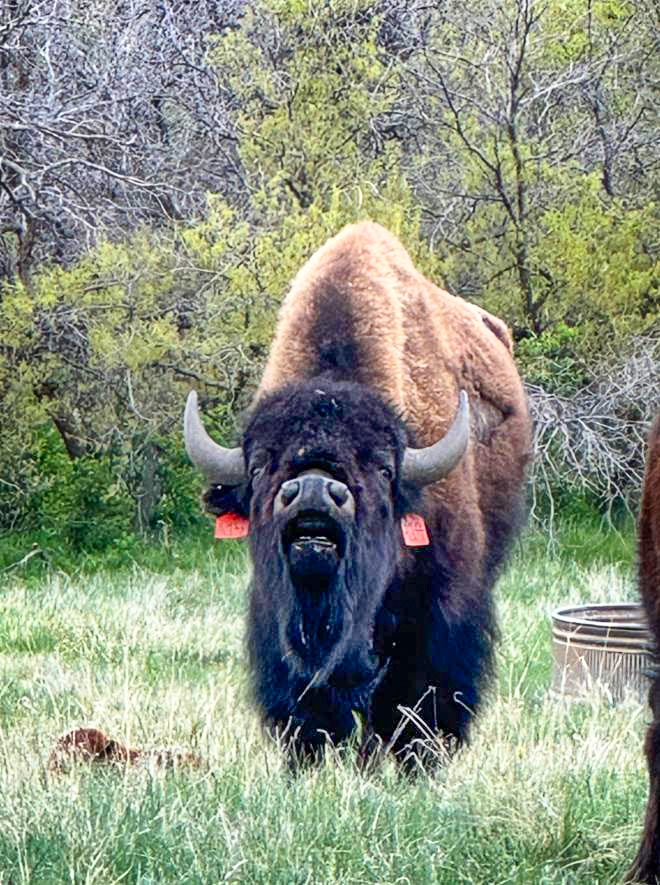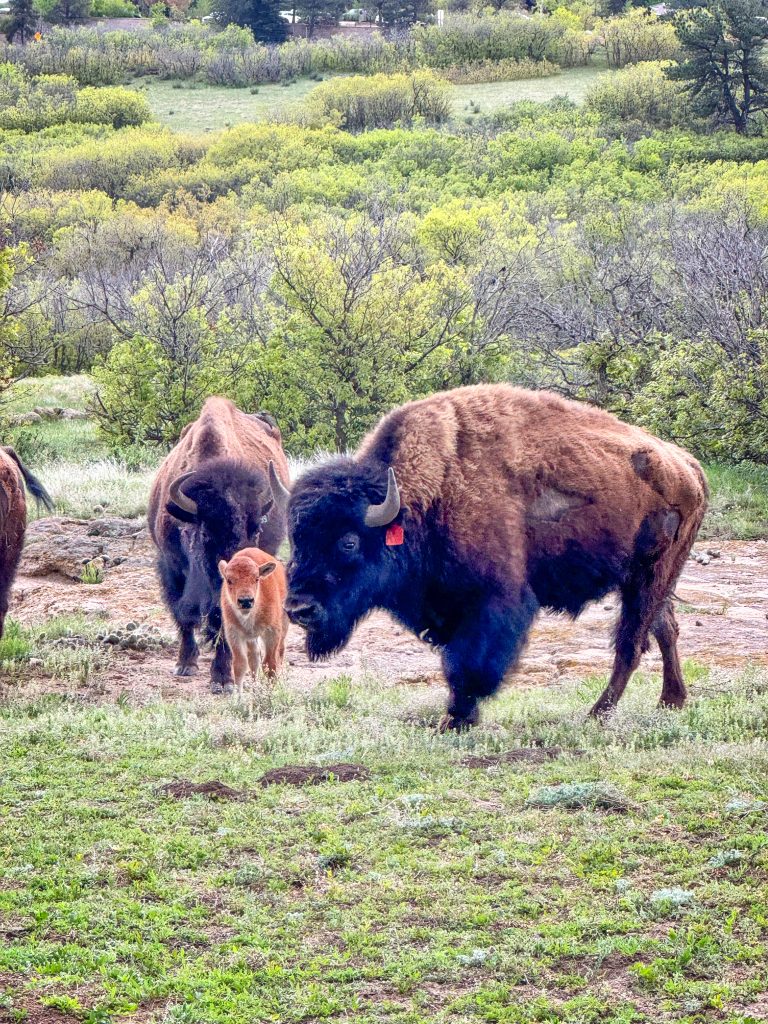Colorado living: Where the bison roam

Haunch, a newly introduced bull, is from the bison conservation herd at the Soapstone Prairie Natural Area, with a pure lineage out of the Yellowstone bison herd. He has been settling in with the rest of the Daniels Park herd and is often found with the main group. “Look for his double orange ear tags,” advised Ryan Phillian, the ranger who lives at Daniels Park with his family.
“Give me a home where the –bison– roam….” Yes bison, not buffalo, although the terms are often used interchangeably for American bison. How are bison and buffalo different? Bison are native to North America and Europe. Buffalo are native to Africa and Asia. Bison have bigger heads than buffalo, beards, large shoulder humps that allow them to swing their heads to clear snow from foraging patches, and thick coats that they shed in spring and early summer. Buffalo have large horns, as long as six feet, with pronounced arcs. A bison’s horns are sharper and much shorter.
In Castle Pines, the Daniels Park bison herd makes for unique neighbors. The herd is one of two that the Denver Mountain Parks (DMP) system maintains. The other herd is located in Genesee Park off Interstate 70. The Daniels Park herd roams the upper elevations and is managed by ranger Ryan Phillian, one of the DMP supervisors, who has lived on the property since the start of 2019, with his wife Georgia and their children, Nolan and Maisie.
Most of the Daniels Park herd are females and calves, with just three bulls. Rawhide and Florence are the main mature bulls and have been with the herd for years. A new 3-year-old bull has recently joined the herd. “[He’s] nicknamed ‘Haunch’ after he managed to run into a pole and hit his back end while loading/transporting him. Left him a bruise for a few weeks,” stated Phillian.
To move the herd between pastures, rather than using herd management tactics that include dogs or horses, DMP emphasizes low stress handling. Phillian manages a series of gates that control access to the park’s pastures, allowing or limiting the animals’ movement from pasture to pasture. A tunnel under Daniels Park Road lets the bison move between the west and east pastures through the gates.
“Tentatively, the bison will move to our west pasture in early July. In the winter, while we are supplementally feeding the bison hay, the hay can encourage the bison to move from one pasture to another or into our corral area as needed,” Phillian stated. Every winter, the bison receive necessary vaccinations, and some are readied for donation to tribal partners across the United States to help bring bison back to their native areas.
“One of the biggest things to always remind people about our herds is that they are conservation herds,” stated Phillian. “These animals are not our pets and to the extent we can, we encourage nature to be nature as a larger part of our park system.”
DMP is hosting a program about the bison – Roaming with the Herd – at Daniels Park, July 14, at 10 a.m. For more information and to register, visit anc.apm.activecommunities.com/denver/activity/search/detail/83584.
To learn more about Daniels Park, visit www.douglas.co.us and search Daniels Park. To learn more about bison and bison conservation, visit denvergov.org and search bison, or visit www.doi.gov.

By Susan Helton; photos courtesy of Ryan Phillian